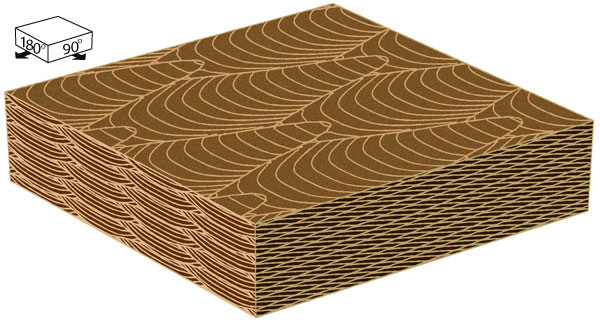Pacific Coastal and Marine Science Center
Bedform Sedimentology Site: “Bedforms and Cross-Bedding in Animation”


FIG. 34c. Structures formed by transverse bedforms with curved, out-of-phase crestlines: Fig. 34a (A) sine-shaped plan forms, Fig. 34b (B) linguoid plan forms, and Fig. 34c (C) lunate plan forms.
RECOGNITION: The computer-graphics experiments in this volume demonstrate that trough-shaped sets of cross-beds can be produced by different kinds of bedforms that have closed topographic depressions (scour pits) in their troughs (Figs. 34 and 36). Migration of the leading (erosional) side of a depression scours a trough-shaped bounding surface, and migration of the trailing surface deposits the overlying cross-beds. Of the resulting trough-shaped sets of cross-beds, however, only those formed by transverse bedforms with curved out-of-phase crestlines have sets that are symmetrically filled with cross-beds and symmetrically truncated by younger trough-shaped sets. The structure shown here is also recognizable by vertical profiles of cross-bed dips. The direction of dip is constant through each bed but alternates in direction from set to set (except in profiles at locations that overlie trough axes, in which case the cross-bed dip direction does not change with depth). Although in-phase plan-form geometries are easily distinguished from out-of-phase geometries, the cross-bedding produced by stoss-erosional, sine-shaped, linguoid, and lunate out-of-phase bedforms is so similar that distinguishing the deposits of these bedforms is virtually impossible.
ORIGIN: The absence of along-crest migration of crestline sinuosities makes the cross-beds deposited by these perfectly transverse bedforms reliable indicators of the paleotransport direction. As in the case of bedforms with in-phase crestlines (FIG. 32), the hydrodynamic significance of specific plan-form geometries is not yet understood.